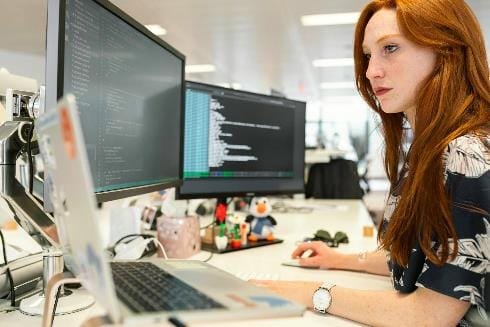In recent years, the convergence of artificial intelligence (AI) and finance has birthed a groundbreaking innovation: AI trading bots. These sophisticated algorithms are reshaping the way traders interact with financial markets, offering unparalleled efficiency, speed, and accuracy in executing trades. As the demand for automated trading solutions grows, AI trading bots have emerged as indispensable tools for both seasoned professionals and novice investors alike.

What is an AI Trading Bot?
An AI trading bot is an automated software program that utilizes advanced algorithms and machine learning techniques to analyze market data, identify trading opportunities, and execute trades with minimal human intervention (e.g. The News Spy). These bots are designed to navigate the complexities of financial markets, leveraging vast amounts of historical and real-time data to make informed trading decisions.
Is there an AI trading bot?
Yes, AI trading bots exist and are actively used in the financial industry. These bots come in various forms, ranging from simple rule-based algorithms to complex neural networks capable of deep learning and predictive analytics. Institutions, hedge funds, and individual traders alike deploy AI trading bots to gain a competitive edge in the market.
What is the best AI for trading?
Determining the “best” AI for trading depends on various factors, including the specific trading strategy, risk tolerance, and desired level of automation. Some popular AI trading algorithms include:
- Machine Learning Algorithms: These algorithms learn from historical data to recognize patterns and trends, making them adaptable to changing market conditions.
- Deep Learning Networks: Neural networks, particularly deep learning models like recurrent neural networks (RNNs) and convolutional neural networks (CNNs), excel at processing sequential data and extracting complex features from financial time series.
- Natural Language Processing (NLP): NLP algorithms analyze news articles, social media sentiment, and other textual data to gauge market sentiment and make trading decisions based on sentiment analysis.
- Reinforcement Learning: Inspired by principles of behavioral psychology, reinforcement learning algorithms learn optimal trading strategies through trial and error, maximizing rewards while minimizing risks.
The best AI for trading ultimately depends on the specific requirements and objectives of the trader or institution utilizing the technology.
Can I use AI for trading?
Absolutely. The democratization of AI technology has made it increasingly accessible to individual traders and investors. Many AI trading platforms offer user-friendly interfaces and tools that allow traders to deploy pre-built algorithms or customize their strategies without requiring advanced programming knowledge.
How do I start AI trading?
Starting AI trading involves several steps to ensure you’re adequately prepared to utilize artificial intelligence algorithms for trading effectively. Below is a detailed guide on how to begin AI trading:
- Algorithm Development: Utilize machine learning and AI techniques to develop trading algorithms based on your defined strategy. Choose appropriate algorithms such as regression, classification, time series forecasting, or reinforcement learning, depending on the nature of your trading problem. Train your algorithms using historical data and fine-tune them through iterative experimentation to improve performance.
- Backtesting: Before deploying your AI trading algorithms in live markets, conduct rigorous backtesting to evaluate their performance under historical market conditions. Use backtesting software or built-in tools provided by your trading platform to simulate trades over past data. Analyze key performance metrics such as profitability, risk-adjusted returns, drawdowns, and win-loss ratios to assess the effectiveness of your algorithms.
- Optimization and Validation: Refine and optimize your AI trading algorithms based on insights gained from backtesting results. Adjust parameters, features, or trading rules to improve performance and adapt to changing market dynamics. Validate the robustness and reliability of your algorithms using out-of-sample testing to ensure they can generalize well to unseen market data.
- Risk Management: Implement robust risk management techniques to protect your capital and minimize potential losses. Set clear risk parameters such as position sizing, stop-loss levels, and maximum drawdown limits. Monitor your AI trading algorithms closely and intervene when necessary to mitigate excessive risk exposure or unexpected market behavior.
- Live Trading: Once you’re satisfied with the performance of your AI trading algorithms in backtesting and validation, it’s time to deploy them in live markets. Start with a small capital allocation and gradually increase your position size as you gain confidence in the reliability of your algorithms. Continuously monitor their performance and make adjustments as needed to adapt to evolving market conditions.
- Continuous Learning and Improvement: The journey of AI trading is an ongoing process of learning and refinement. Stay updated on the latest advancements in AI technologies, financial markets, and trading strategies. Continuously analyze your trading results, identify areas for improvement, and iterate on your algorithms to stay ahead of the curve.
Final Word
AI trading bots represent a paradigm shift in the world of finance, offering unprecedented opportunities for traders to capitalize on market inefficiencies and generate consistent returns. By harnessing the power of AI technology, individuals and institutions can navigate the complexities of financial markets with confidence and precision, ushering in a new era of innovation and profitability in fintech and trading.

